9 Best Things To See In Meknes, Morocco
Table of Contents
Numerous itineraries include a visit to the Imperial City of Meknes. Whether you embark on a day trip from Fes or pass through it while journeying between Fes and Casablanca, Meknes beckons with its historical and cultural riches.
Meknes, one of Morocco’s four imperial cities, exudes an air of regal charm and resonates with the echoes of its grand past. Whether you explore the city’s monumental gate, the Bab Mansour, its UNESCO-designated medina, or the splendid Mausoleum of Moulay Ismail, you’ll be immersed in the city’s rich heritage.
As you navigate the bustling streets and absorb the local atmosphere, you’ll encounter traditional markets, architectural marvels, and historic sites that transport you to another era. From the Royal Granaries at Heri es-Souani to the delightful Lahdim Square, Meknes offers a diverse array of attractions and experiences.
The city’s cultural treasures are showcased at the Dar Jamai Museum, where Moroccan art and history come to life. A short excursion to the Moulay Ismail Dam reveals the intricacies of an ancient irrigation system that played a pivotal role in the city’s history. Meanwhile, Koubbat as-Sufara, the ambassador’s reception hall, presents a beautifully preserved piece of Meknes’ architectural heritage.
Meknes, often regarded as the “Versailles of Morocco,” is a city that stands as a testament to the grandeur and significance of Morocco’s imperial past. Whether it’s a brief stop or a dedicated visit, Meknes offers a captivating journey through history and culture that enriches any Moroccan itinerary.
1: Dar Jamai Museum.
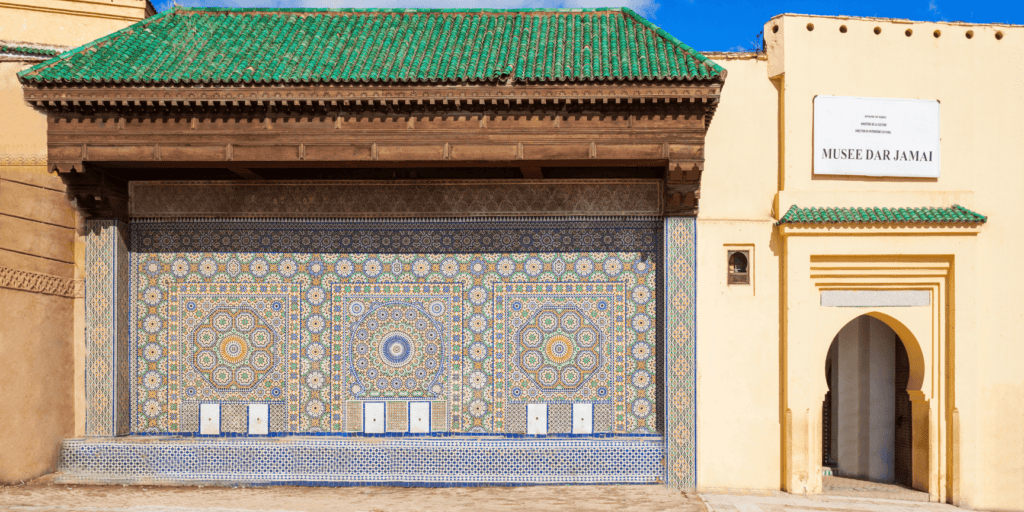
Nestled in Northern Morocco, just sixty kilometers from Fes, lies Meknes, a city that once served as the capital of Morocco until 1727. Situated in close proximity to the Atlas Mountains, this charming city is now a UNESCO World Heritage Site, offering a plethora of things to see and explore, making it an ideal destination for a day visit when traveling through Morocco.

One of the notable attractions in Meknes is a historic building that was originally constructed as a residence for the Jamai family in 1822. Over the years, it served various purposes, even functioning as a military hospital in 1912. Today, this architectural gem has been transformed into a museum, showcasing an array of objects and artifacts for visitors to admire.
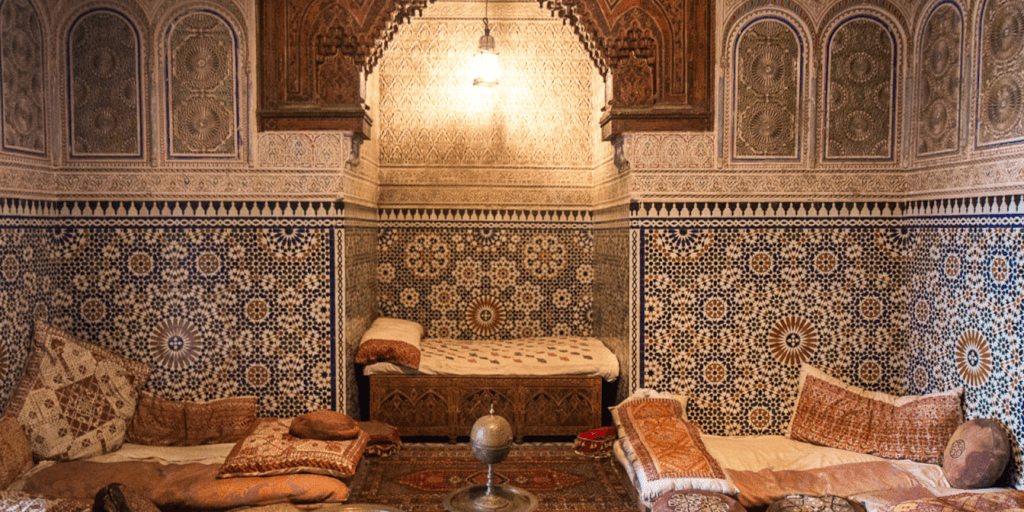
The museum welcomes you with a serene and beautifully landscaped garden, providing a delightful introduction to its impressive architecture. Inside, you’ll have the opportunity to view an eclectic collection that includes jewelry, cooking utensils, ancient books, and a variety of arts and crafts. These artifacts harken back to the time of Sultan Moulay Ismail, who reigned from 1792 to 1822, providing a fascinating glimpse into the historical and cultural heritage of the region.
A visit to this museum is not just a journey through time but also an opportunity to immerse yourself in the rich tapestry of Meknes’ history and the legacy of its former ruler. It’s an experience that offers both aesthetic and historical appreciation, making it a noteworthy stop during your exploration of Morocco.
2: Habs Qara Prison.
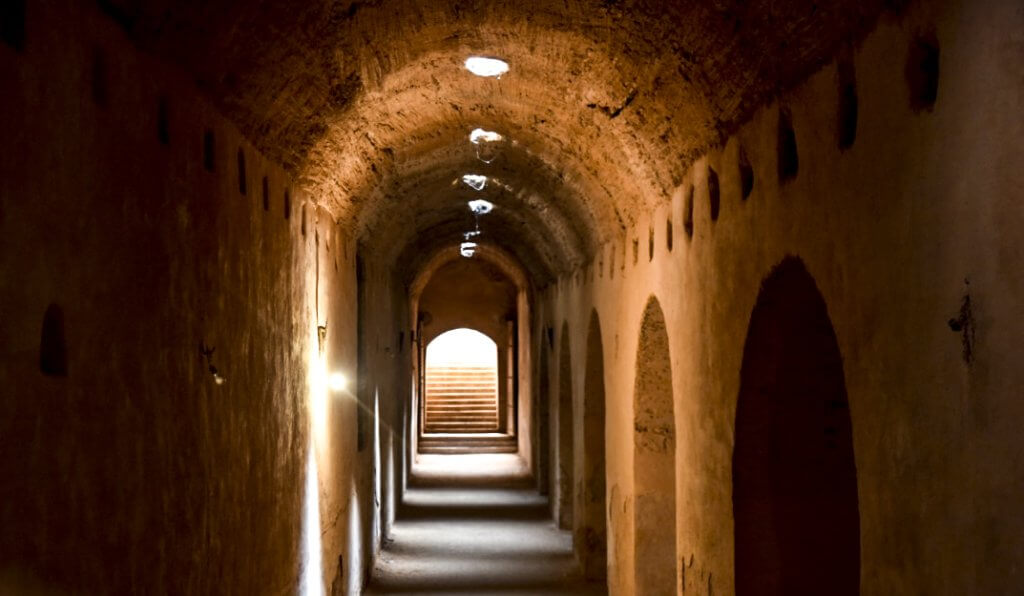
For those with a keen interest in history, a visit to the underground prison where Sultan Moulay Ismail detained prisoners is a must. This historical site is situated directly beneath a magnificent pavilion that once served as a reception area for ambassadors from various countries. Within the confines of this subterranean complex, a staggering number of around 60,000 individuals were enslaved and incarcerated at various points in time. These prisoners were compelled to labor on the Sultan’s ambitious architectural projects, leaving a lasting imprint on the region’s historical landscape.
Exploring this underground prison provides a chilling yet compelling insight into the past, shedding light on the harsh realities of confinement and forced labor during Sultan Moulay Ismail’s reign. It’s a sobering experience that underscores the historical significance of this site, where the lives and labor of many contributed to the realization of the sultan’s grand architectural vision.
A visit to this underground prison is an opportunity to delve deep into the annals of Morocco’s history, uncovering a chapter that vividly illustrates the power and ambitions of its ruler. It serves as a poignant reminder of the sacrifices made and the enduring legacy of the Sultan’s reign in this remarkable region.
3: Volubilis.

The Roman ruins of Volubilis lie within an hour’s drive from Meknes and stand as one of the largest Roman archaeological sites in Africa. This ancient settlement traces its origins back to approximately the 3rd century B.C. A visit to Volubilis offers a unique opportunity to marvel at well-preserved mosaics and the magnificent Decumanus Maximus, a key thoroughfare in the city.
Guided by an expert, you’ll gain valuable insights into how the Romans once inhabited and thrived in this city. With their historical narratives, they’ll help you conjure vivid images of Volubilis as it once existed, bustling with life and culture.
Exploring Volubilis is like stepping back in time, where you can witness the enduring legacy of Roman civilization in North Africa. The site’s ruins and artifacts are a testament to the ancient city’s grandeur and historical significance, making it an indispensable stop for history enthusiasts and anyone captivated by the marvels of the past.
4: Bou Inania Medresa.
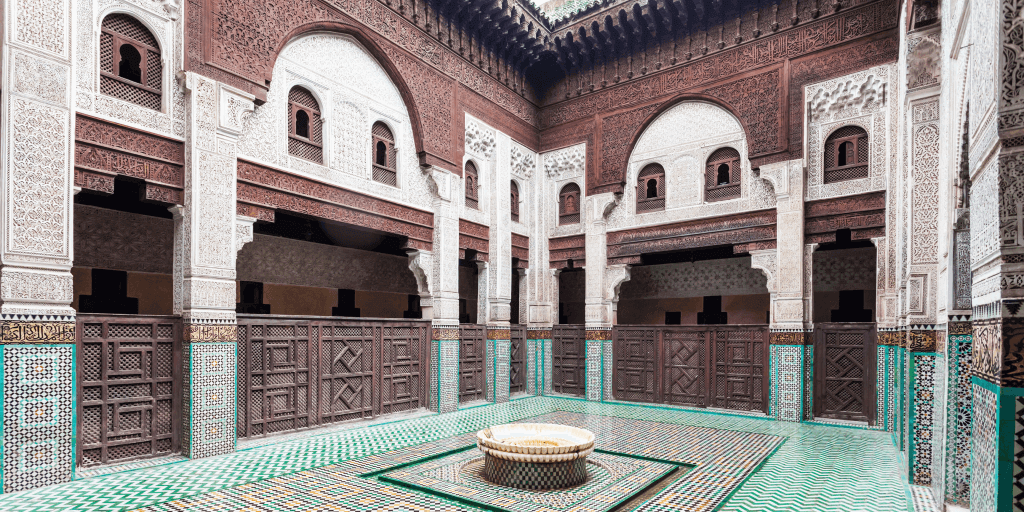
The Bou Inania Medresa, an Islamic learning center, is conveniently situated near the great mosque in the medina. This architectural gem dates back to medieval times and stands as a testament to the splendor of Islamic architecture. A visit to this historical site is indeed well worth the journey, as it offers a captivating glimpse into the rich cultural and architectural heritage of the region.
5: Bab Mansour Gate.
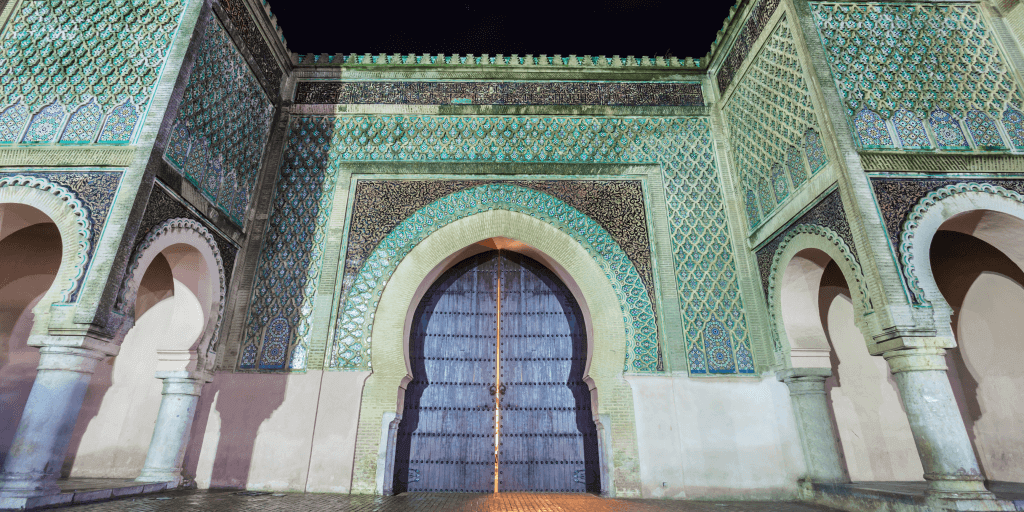
This elaborate gate stands as one of the final projects of Sultan Moulay Ismail, a testament to his power and authority. Commissioned as a tribute to his rule, Sultan Moulay Ismail entrusted Mansour Laalej with the construction of this grand gate. Although the gate was completed in 1732, after the sultan’s passing, it was brought to fruition under the guidance of his son.
As you approach this magnificent gate, take a moment to marvel at the intricate patterns meticulously carved and adorned with green and white tiles. It is a truly remarkable work of architecture that speaks to the grandeur and historical significance of the era.
6: Mausoleum of Moulay Ismail.

Moulay Ismail, the ruler who established Meknes as the capital of Morocco during his reign from 1672 to 1727, initiated the construction of his mausoleum while he was still alive, ensuring its resplendent magnificence. A short stroll from the medina, locals can readily guide you to this historical site. The courtyard, adorned in a vibrant and striking yellow, provides an inviting introduction.

Within the mausoleum, visitors are granted the privilege of capturing photographs in the tomb hall. However, as a mark of respect, non-Muslim visitors are kindly requested not to approach the tomb itself. It’s customary to remove your shoes when entering. Once inside, you’ll be captivated by the exquisite tile work and intricately colored carvings that grace this sacred space, offering a captivating glimpse into Morocco’s rich cultural and historical tapestry.
7: Stroll along El Hedim Square.
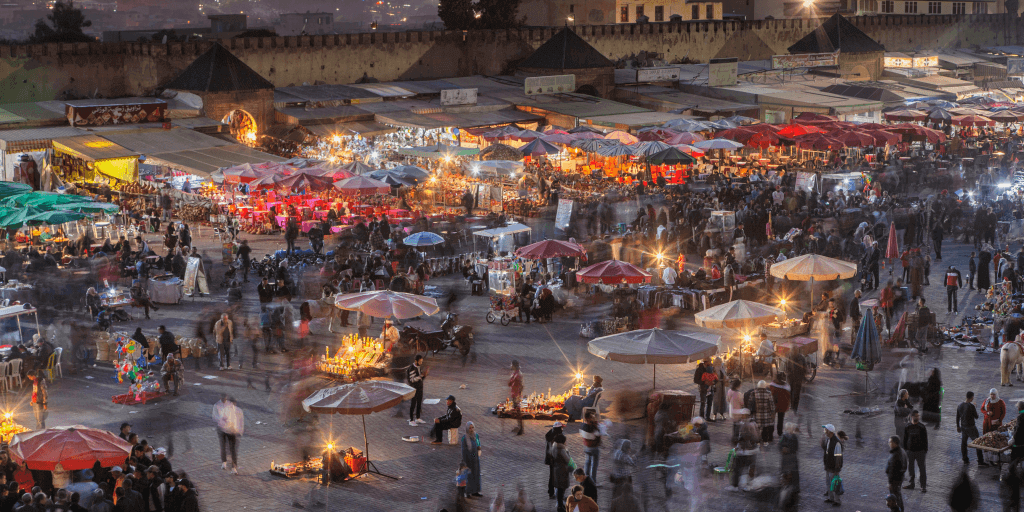
Place Hedim in Meknes is to Meknes what Jemaa el-Fnaa is to Marrakech—a central square graced with a delightful array of restaurants and salon de thé that beckon you to linger. While it may not rival the lively and vibrant atmosphere of its counterpart in Marrakech (you can find more about Marrakech), it compensates with an authentic and charming ambiance, particularly in the evening.

A helpful tip: Make an effort to ascend to the rooftops at least once, especially just before sunset. From this vantage point, you’ll witness the merchants diligently setting up their stalls, and you’ll be treated to the finest view of the iconic Bab Mansour, an experience that encapsulates the essence of Meknes and its bustling square.
8: Explore the ancient Medina.
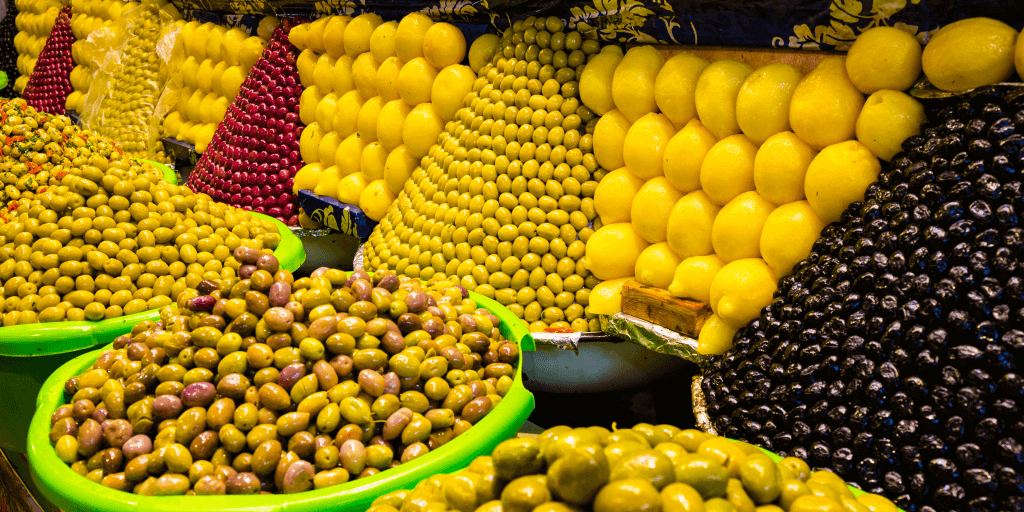
While the medina of Meknes may not be as sprawling or grand as those in Fes or Marrakech, it still holds a wealth of captivating sights and offers a delightful experience for wanderers. As you meander through its labyrinthine streets, you’ll encounter a diverse array of stalls peddling an assortment of wares, from tempting snacks to colorful clothing. The medina’s charm lies in its unassuming authenticity, making it a wonderful place to explore and immerse yourself in the local culture.
9: A Nearby Vineyard.

In the Meknes region, there are a few wineries and vineyards waiting to be explored. You have the option to arrange a wine tasting session, complemented by a goat cheese tasting, or simply relish a leisurely stroll through the picturesque property while learning about the vineyard’s heritage and winemaking process. For those interested in this unique experience, don’t hesitate to consult your dedicated sales representative about adding this delightful stop to your itinerary.
- Should you have any further inquiries or require additional information regarding your visit to Meknes or the inclusion of any of these attractions in your itinerary, please do not hesitate to reach out. We are more than willing to tailor your trip to your specific preferences and needs, ensuring a personalized and memorable experience during your journey.






